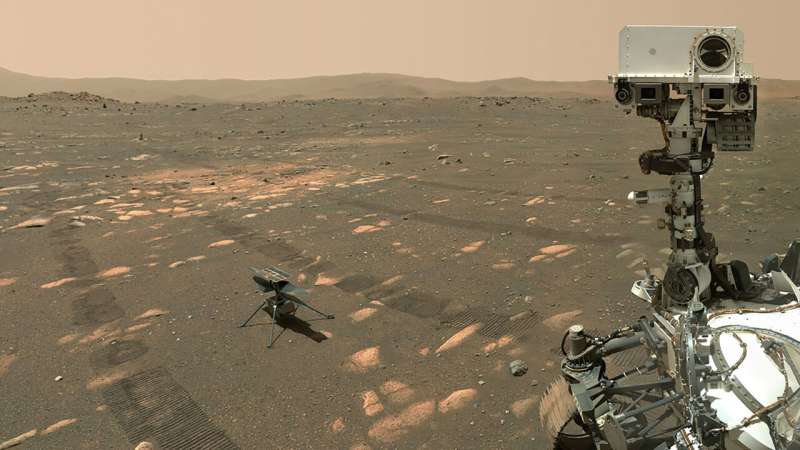Since NASA's Perseverance rover landed on Mars, its two microphones have recorded hours of audio that provide valuable information about the Martian atmosphere. Credit: NASA
Since NASA's Perseverance rover landed on Mars, its two microphones have recorded hours of audio that provide valuable information about the Martian atmosphere.
Baptiste Chide, of Los Alamos National Lab, will discuss the importance of this acoustical information in the presentation, "Mars soundscape: Review of the first sounds recorded by the Perseverance microphones," at the 182nd Meeting of the Acoustical Society of America on May 25 at 3:45 p.m. Eastern U.S.at the Sheraton Denver Downtown Hotel.
After more than a year of recording on the surface, the team reduced the data to a Martian playlist that features about five hours of sounds. Most of the time, Mars is very quiet. Sounds are 20 decibels lower than on Earth for the same source, and there are few natural noises except for the wind.
"It is so quiet that at some point, we thought the microphone was broken," said Chide.
However, after listening carefully to the data, the group uncovered fascinating phenomena. There was a lot of variability in the wind, and the atmosphere could abruptly change from calm to intense with rapid gusts. By listening to well-characterized and intentional laser sparks, Perseverance calculated the dispersion of the sound speed, confirming a theory that high-frequency sounds travel faster than those at low frequencies.
"Mars is the only place in the solar system where that happens in the audible bandwidth because of the unique properties of the carbon dioxide molecule that composes the atmosphere," said Chide.
The red planet's seasons impact its soundscape. As carbon dioxide freezes in the polar caps during winter, the density of the atmosphere changes and the environment loudness varies by about 20%. That molecule also attenuates high-pitched sounds with distance.
Perseverance continues to collect audio recordings as it moves across different regions of Mars. Chide believes this technique will be even more informative on planets and moons with denser atmospheres, such as Venus and Titan, where sound waves interact more strongly and propagate farther.
More information: acousticalsociety.org/asa-meetings/
Provided by Acoustical Society of America
























